Mansfield, Gunthorpe Court, Flood Alleviation (2019)
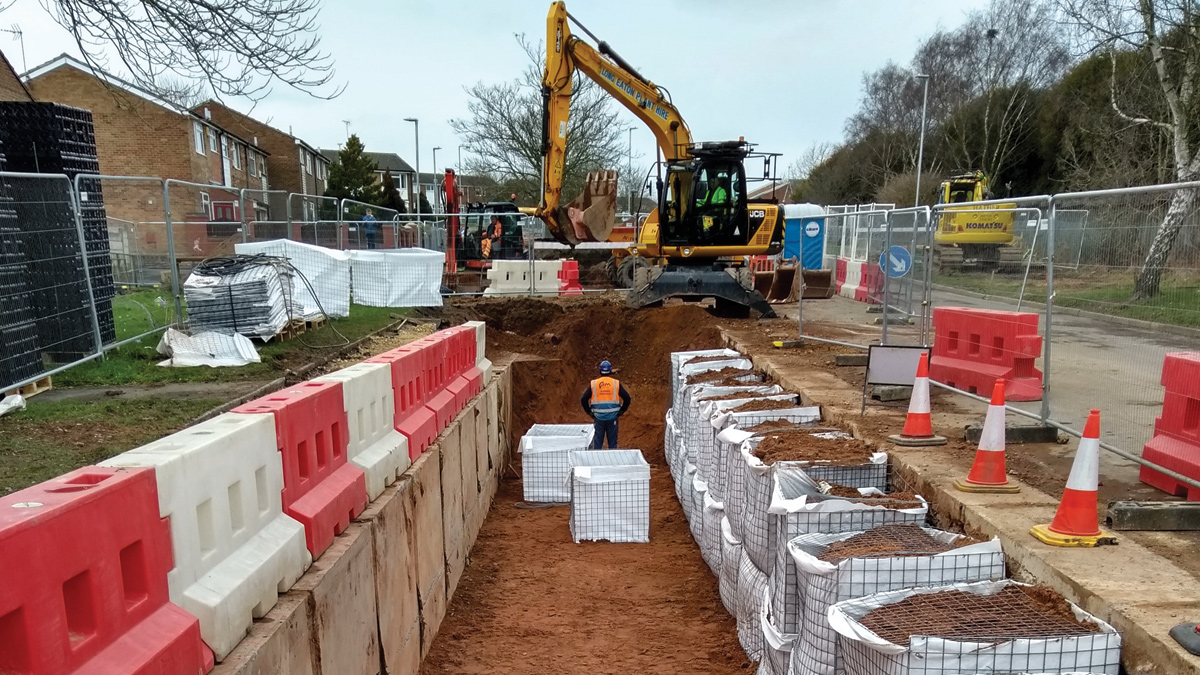
Temporary gabion baskets to allow geocellular tanks installation - Courtesy of Galliford Try
A £940k flood alleviation scheme has been successfully completed in Nottinghamshire. Mansfield, Gunthorpe Court, was a scheme designed to tackle insufficient stormwater capacity which was causing internal and external flooding to numerous properties in the area. Part of the solution was to provide 480m3 of storage by converting an existing pedestrian subway into an attenuation feature along with the use of underground geocellular crates. By limiting the pass forwards flows to utilise the combined attenuation features, this would ensure the properties downstream remain safe from any flood water.
Scheme background
Design and build contractor, Galliford Try, worked closely with the Severn Trent Water Solution Team to develop the lowest TOTEX solution.
Gunthorpe Court is a residential street located at a natural low point with another adjacent parallel cul-de-sac. Surface water flooding, which affects properties and surrounding highways in the area, was caused by hydraulic incapacities in the surface water drainage system, which also suffered from misconnections of the public foul sewers and overland surface water run-off not captured by the highway drainage system.
During initial feasibility stages of the design, it became apparent that upsizing the existing surface water system to safely convey the flood waters away would prove too costly and disruptive to local residents with the need for numerous lengthy road closures. The solution team instead focussed on sustainably providing the required 480m3 of attenuation to reduce the flood return period at the affected properties to a 1 in 20 year storm event.
Retrospectively designing such large storage volumes within the confines of the densely populated housing estate required innovative proposals.
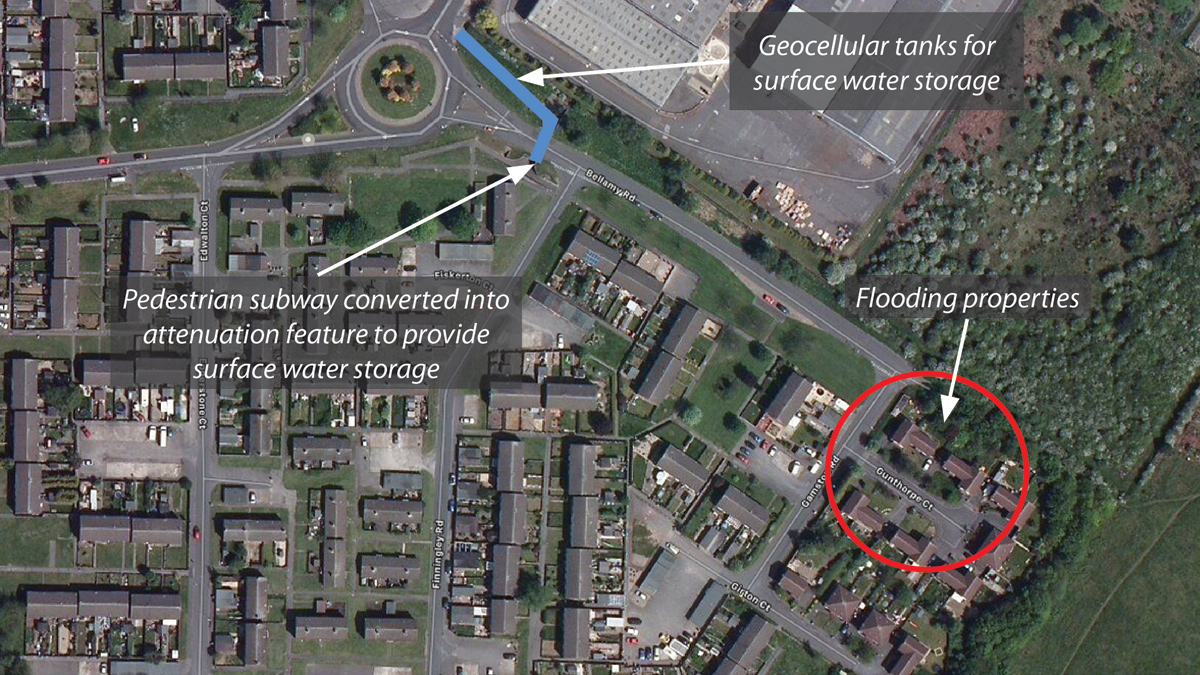
Location of storage to flooding area © Google – Courtesy of Galliford Try
Innovations and partnership working
In order to provide for such a large storage volume, the Severn Trent Water Solution Team came up with an innovative solution to convert a pedestrian subway into an attenuation feature for part of the required storage.
This volume was supplemented by underground geocellular crates installed alongside the underpass to provide the remaining storage requirement.
The subway belonged to Nottinghamshire County Council, but due to the infrequent use by pedestrians, concerns over anti-social behaviour and unsightly nature of the subway, the council was open to transfer ownership over to Seven Trent Water under the partnership working initiative as their contribution to the scheme.
Underpass conversion
It was up to the design and build contractor, Galliford Try, to turn the subway storage from vision into reality. The underpass was in the form of a large concrete pipe, so in theory all Galliford Try needed to do was to detail modifications at either end of the underpass so it could be integrated with the sewer network.
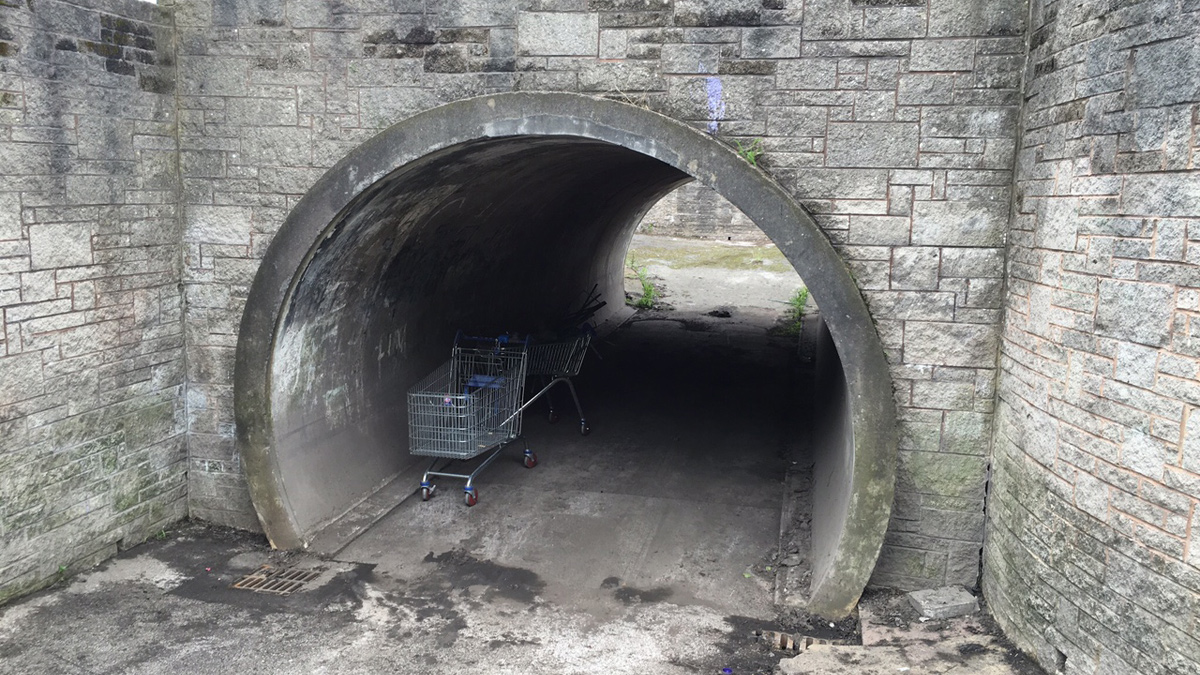
Pedestrian underpass before conversion – Courtesy of Severn Trent Water
The Galliford Try design team would have to consider factors such as how flood water would fill and empty the underpass, making the ends water tight and the tie-in details with adjacent geocellular crates so the required storage volume could be achieved.
- A brick wall was built at either end of the underpass to convert the structure into an attenuation feature. 10mm Helibars were used to ensure the newly formed brick walls were securely tied in with the existing underpass retaining wall, minimising the risk of any future deformation.
- 225mm diameter inlet and outlet openings were installed at either end of the underpass invert to allow flood water to fill and empty the newly formed attenuation feature.
- Geocelluar crates were installed on either side of the underpass conversion, providing the extra storage volumes required. The two features were connected by the 225mm diameter openings at the underpass invert.
- Further geocelluar crates were also installed upstream of the flow control chamber in a grass verge area which would provide the remaining storage.
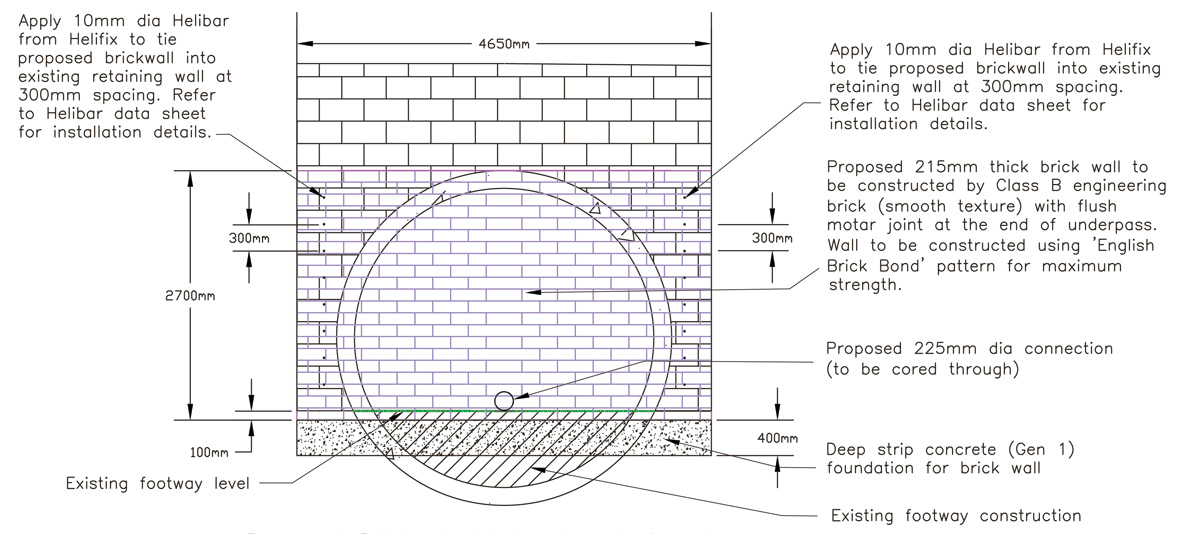
Proposed brickwall details showing pedestrian underpass being blocked off – Courtesy of Galliford Try
Maintenance access
As part of the scheme consultation process, the Galliford Try design team considered how access was to be provided for any future maintenance within the blocked-up underpass. After reviewing various solutions, Galliford Try provided a bespoke manhole chamber with ladder access on the grass verge downstream of the underpass. Compared to having an access opening directly on top of the underpass in the highway, this option eliminated any risk of damaging the structural integrity of the underpass which allow traffic to flow safely above.
Partnership working
Under the partnership working initiative, Nottinghamshire County Council transferred the pedestrian subway ownership over to Severn Trent Water under Section 102 agreement of the Water Industry Act 1991.
By allowing Severn Trent Water to use the subway as flood water storage, the council has promoted sustainable working methods and allowed a significant reduction in terms of cost, material used and duration on site through conversion of a redundant subway. The project has set a partnership working precedent with the Local Authority and provides a template for any future working relationships.
Under the agreement with Nottinghamshire County Council, Galliford Try provided a new uncontrolled crossing point to replace the underpass. The council adopted this new crossing point under Section 278 Highways Act 1980 when the scheme was completed. The new ground profile after the attenuation work was also constructed in agreement with the council.
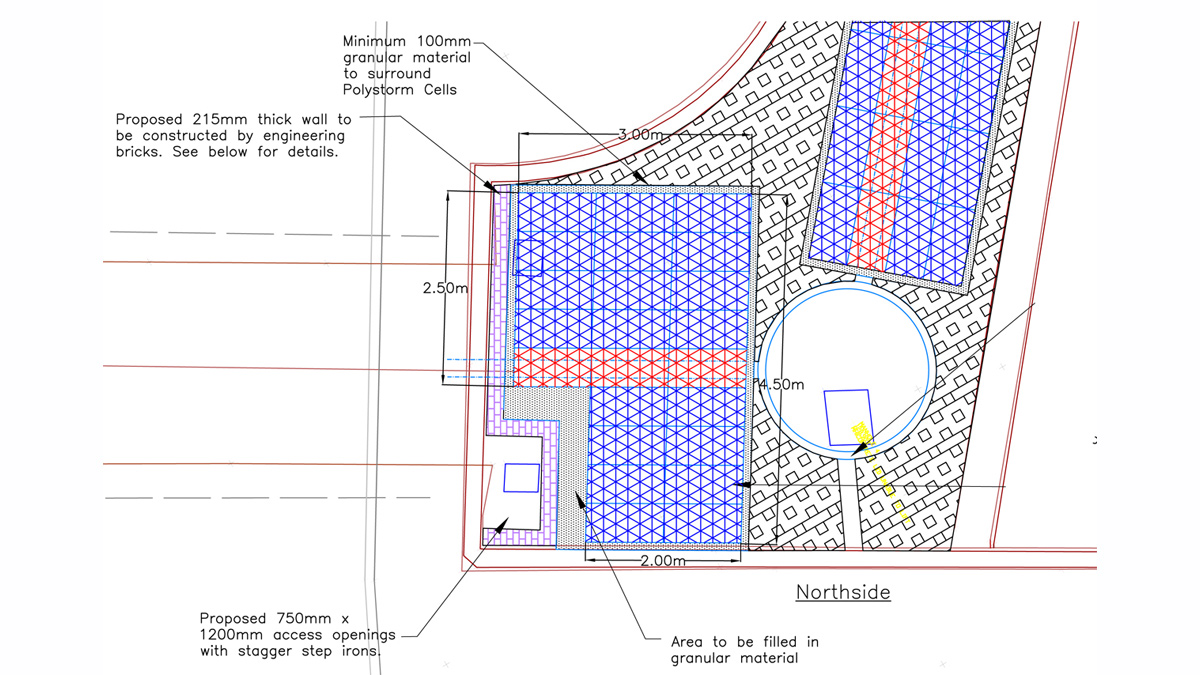
Location of underpass access manhole – Courtesy of Galliford Try
Sustainability
Sustainability was a key driver throughout the project duration with the team striving to reduce the environmental impact of the construction activities. By utilising the disused subway, the scheme had significantly reduced the required excavation volume. The quantity of excavated material to be transported off site was limited compared to the large volumes predicted using traditional storage solutions. Maintenance was also considered throughout the design process with additional catch-pits being located upstream of the tanks to intercept sediment to allow for ease of access for operatives.
By embracing the principle of off-site manufacturing, the project team selected as many components as possible to drive efficiency on the project. The geocellular crates used are lightweight and stackable. They can be easily installed on site by operatives without the use of any machineries and required fewer vehicle movements for transportations.
Communications
It was identified at an early stage that the general public living near Gunthorpe Court was going to be subject to significant disruptions from any road closures and construction related activity taking place, so a comprehensive stake holder management plan was put in place.
The team delivered over 500 letters throughout the design and build process informing the residents of upcoming works and progress on site.

Proposed storage details of underpass (scale 1:50) – Courtesy of Galliford Try
Lasting legacy
The successful completion of the Mansfield Gunthorpe Court Flood Alleviation Scheme has removed a significant number of properties from the flooding register. The benefits would also be reaped by the wider community who were directly and indirectly affected by flooding in the area.
All construction activities took place without a single Lost Time Incident and the site team successfully passed all Health and Safety and Environmental audits.
The scheme was one of Severn Trent Water’s high priority schemes due to the value, extent of the works and the customer impact so to deliver it ahead of programme, within budget and with no health and safety incidents is a fantastic achievement and credit to the collaborative working between Severn Trent Water and Galliford Try.




